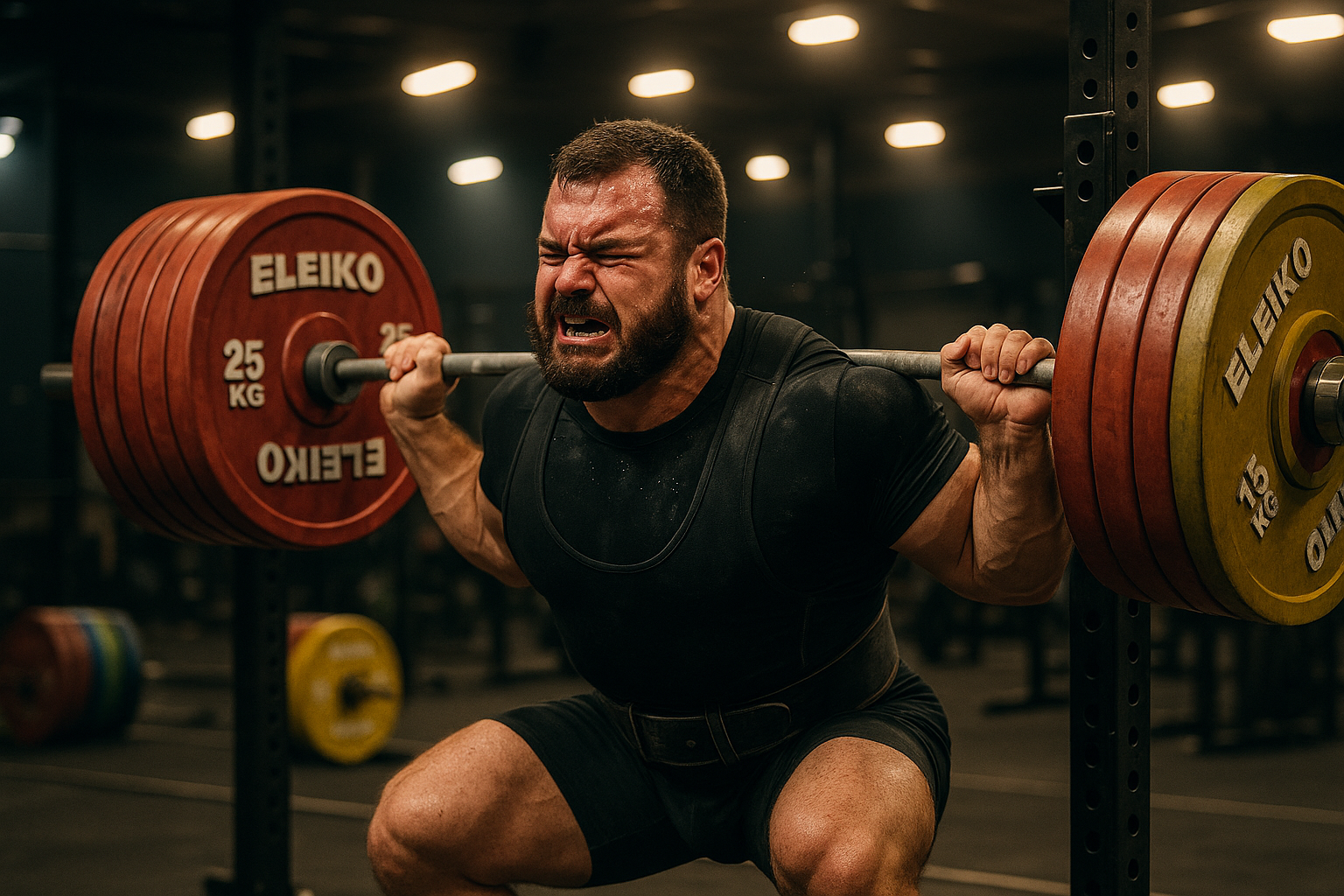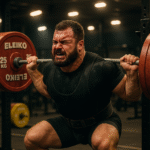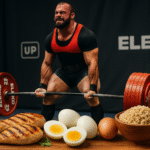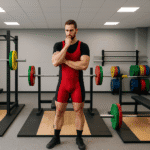Rate of Perceived Exertion (RPE) has revolutionized how powerlifters approach training intensity and load management. This autoregulatory training method allows athletes to adjust their workouts based on daily readiness while maintaining progressive overload. Understanding how to properly implement RPE can transform your powerlifting performance and reduce injury risk.
What is RPE in Powerlifting?
RPE, or Rate of Perceived Exertion, is a subjective scale used to measure training intensity based on how difficult a lift feels. In powerlifting, the most commonly used RPE scale ranges from 1-10, where 10 represents maximum effort (unable to complete another repetition) and 1 represents minimal effort.
The powerlifting RPE system was popularized by Mike Tuchscherer and differs from traditional percentage-based training by allowing lifters to adjust loads based on their daily strength levels rather than predetermined percentages.
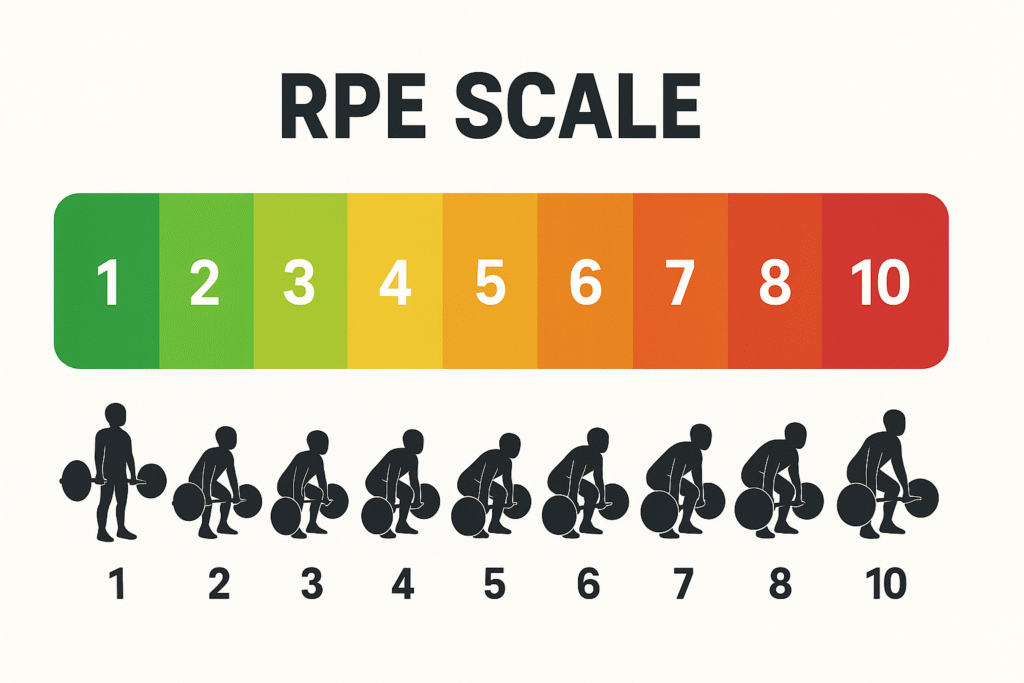
Understanding the RPE Scale for Powerlifting
The 10-Point RPE Scale Breakdown:
| RPE Rating | Reps in Reserve | Description | Training Application |
|---|---|---|---|
| 10 | 0 | Maximum effort – no additional reps possible | Competition attempts, true max testing |
| 9.5 | 0-1 | Could possibly squeeze out one more rep with perfect form | Competition opener practice |
| 9 | 1 | Definitely have one more rep in the tank | Heavy singles, competition simulation |
| 8.5 | 1-2 | Could complete 1-2 more reps | Peak intensity training |
| 8 | 2-3 | Could complete 2-3 more reps | Heavy working sets, strength building |
| 7 | 3-4 | Could complete 3-4 more reps | Moderate intensity, volume work |
| 6 | 4-5 | Could complete 4-5 more reps | Volume accumulation, technique work |
| 5 | 5+ | Light effort, significant reps remaining | Warm-up sets, recovery work |
| 4 and below | 6+ | Very light effort | Warm-up territory, movement prep |
Benefits of Using RPE in Powerlifting Training
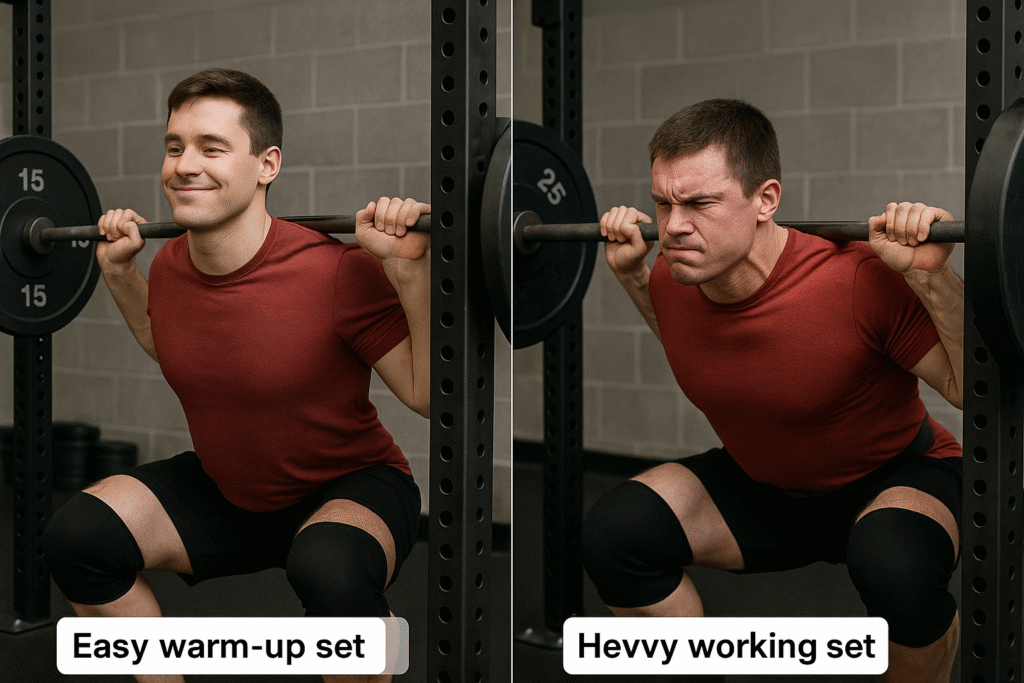
1. Autoregulation and Adaptability
RPE allows powerlifters to adjust training loads based on daily readiness factors such as sleep quality, stress levels, and recovery status. This prevents overreaching when you’re feeling worn down and allows for pushing harder when you’re feeling strong.
2. Improved Training Specificity
By training at appropriate intensities relative to your current strength levels, RPE ensures you’re always working within optimal training zones for your goals, whether building strength, practicing technique, or peaking for competition.
3. Enhanced Mind-Muscle Connection
Regular RPE practice develops better body awareness and helps lifters understand their true capabilities, leading to more accurate attempt selection in competition.
4. Reduced Injury Risk
By preventing excessive loads on days when your body isn’t ready, RPE-based training can significantly reduce injury risk compared to rigid percentage-based programs.
How to Implement RPE in Your Powerlifting Program

Step 1: Learn the Scale
Start by practicing RPE assessment during your regular training sessions. After each working set, assign an RPE rating and compare it with your actual performance capabilities.
Step 2: Begin with Conservative Estimates
New RPE users typically underestimate their capabilities. Start conservatively and gradually develop accuracy through consistent practice and honest self-assessment.
Step 3: Track and Analyze
Keep detailed training logs recording weights, reps, and RPE ratings. This data helps identify patterns and improves future RPE accuracy.
Step 4: Adjust Loads Accordingly
Use RPE to make real-time training adjustments. If your target RPE 8 set feels like RPE 9, reduce the load for subsequent sets.
RPE Programming Strategies for Powerlifters
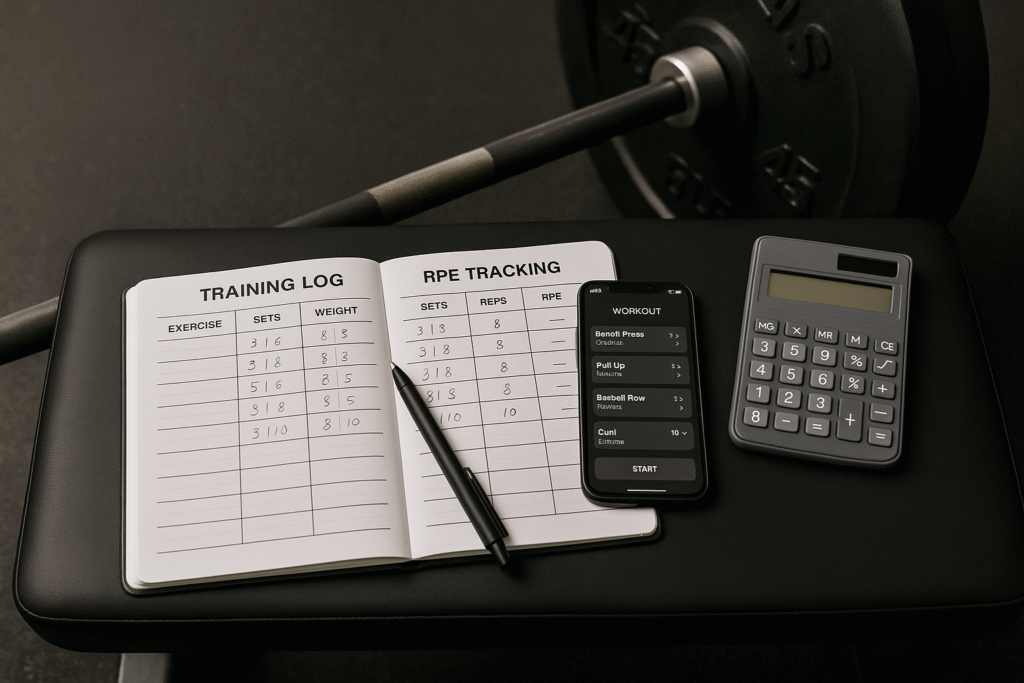
Volume Accumulation Phase
During volume phases, target RPE 6-8 range to accumulate training stress while maintaining recovery capacity. This allows for higher training frequencies and volumes without excessive fatigue.
Intensity Phase
As you transition toward competition, shift to RPE 8-9.5 range to practice handling heavier loads and develop confidence with near-maximal weights.
Peaking Phase
During the final weeks before competition, focus on RPE 9-10 range to simulate competition conditions and practice opener, second, and third attempt strategies.
Common RPE Implementation Mistakes
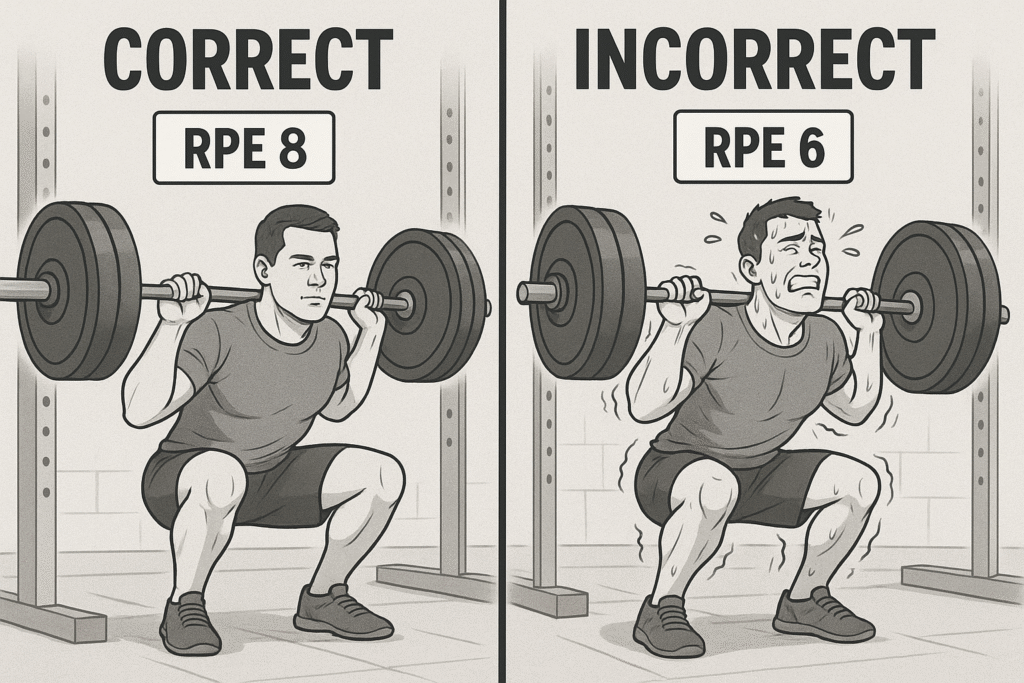
Mistake 1: Confusing Effort with Exertion
RPE measures how close you are to failure, not how hard you’re trying. A technically perfect lift at 85% might feel easy (RPE 7) even with maximum focus and effort.
Mistake 2: Ignoring External Factors
Factors like caffeine intake, music, training partners, and environment can influence RPE perception. Maintain consistency in your training conditions when possible.
Mistake 3: Perfectionism Paralysis
Don’t obsess over hitting exact RPE targets. A range of 0.5 RPE points is acceptable and normal for most lifters.
RPE vs Percentage-Based Training
While percentage-based training provides structure and predictability, RPE offers superior flexibility and individualization. Many successful powerlifters combine both approaches, using percentages as guidelines while allowing RPE to fine-tune daily adjustments.
The hybrid approach might look like: “Work up to 85% for a triple at RPE 8-8.5.” This provides a starting point while allowing for individual variation.
Advanced RPE Techniques
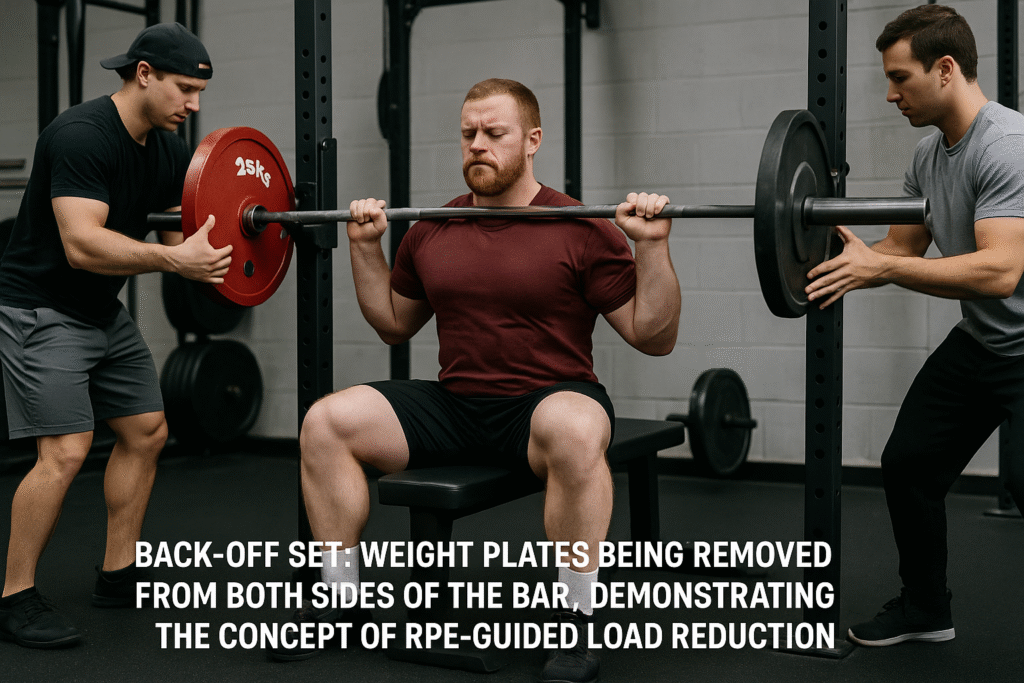
RPE Clusters and Back-Off Sets
Use RPE to determine appropriate back-off percentages after heavy singles. If your opener feels like RPE 7, your back-off sets should target RPE 6-7 for optimal volume accumulation.
Competition Simulation
Practice competition timing using RPE guidelines. Your opener should feel like RPE 7-8, second attempt RPE 9-9.5, and third attempt RPE 10.
Accessory Work Integration
Apply RPE principles to accessory movements to ensure they complement rather than interfere with main lift development.
Troubleshooting RPE Accuracy

Building Calibration
Regular testing sessions where you work up to true maximums help calibrate your RPE scale. Compare your perceived capabilities with actual performance monthly.
Video Analysis
Recording lifts helps identify discrepancies between perceived and actual difficulty. Bar speed and technique breakdown provide objective RPE validation.
Training Partner Feedback
Experienced training partners can provide external perspective on your lift difficulty and help refine RPE accuracy.
RPE for Competition Preparation
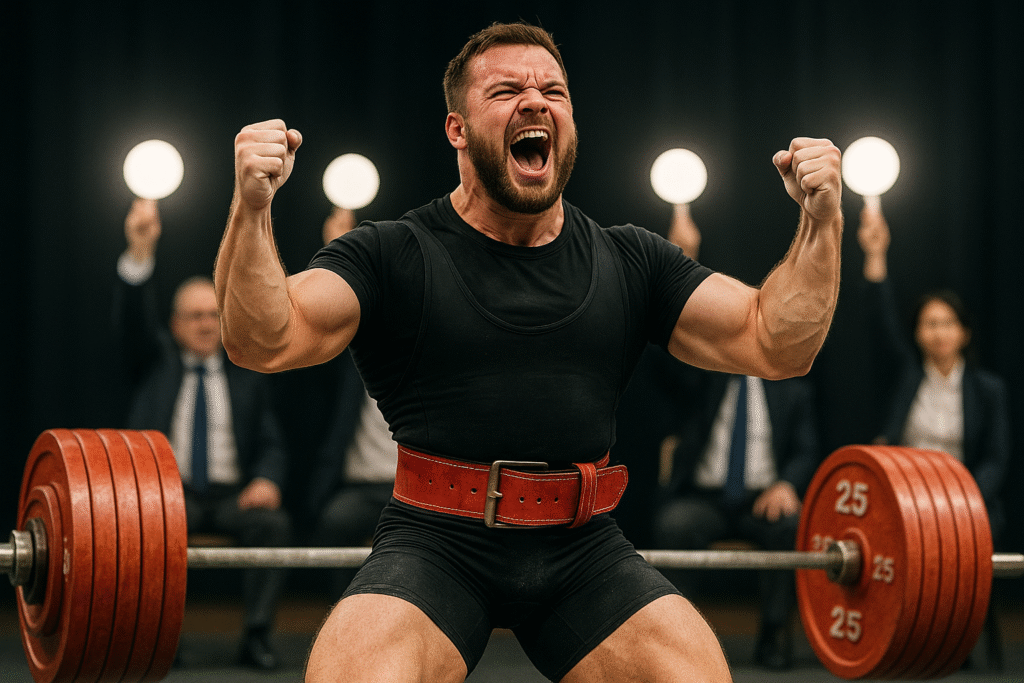
Meet Simulation Training
Use RPE-based meet simulations to practice attempt selection under competition conditions. This builds confidence and refines your ability to gauge attempt difficulty.
Opener Selection Strategy
Your competition opener should feel like RPE 7-8 in training. This ensures success while providing a confidence boost for subsequent attempts.
Handling Pressure
Competition nerves can skew RPE perception. Practice deep breathing and visualization techniques to maintain accurate self-assessment under pressure.
Conclusion
RPE represents a powerful tool for optimizing powerlifting training by providing flexibility within structured programming. Success with RPE requires patience, honest self-assessment, and consistent practice. When properly implemented, RPE-based training can lead to improved performance, reduced injury risk, and greater training satisfaction.
Remember that mastering RPE is a skill that develops over time. Start conservatively, track your progress meticulously, and remain patient as you develop this valuable training tool. The investment in learning proper RPE application will pay dividends throughout your powerlifting career.
Whether you’re a beginner powerlifter or an experienced competitor, incorporating RPE into your training arsenal will enhance your ability to train smart, stay healthy, and achieve your strength goals.
Q1: How long does it take to become accurate with RPE ratings?
A: Most powerlifters develop reasonable RPE accuracy within 4-8 weeks of consistent practice. However, true mastery can take 6-12 months of regular training. Beginners should expect some inconsistency initially and focus on honest self-assessment rather than perfect accuracy.
Q2: Should I use RPE for all my lifts or just the main movements?
A: Start by applying RPE to your main competition lifts (squat, bench press, deadlift) first. Once comfortable, you can extend RPE to accessory movements. Many lifters find RPE most valuable for compound movements where autoregulation provides the greatest benefit.
Q3: What’s the difference between RPE 9 and RPE 9.5?
A: RPE 9 means you definitely have one more rep available with good form. RPE 9.5 indicates you might be able to complete one more rep, but it would require perfect conditions and maximum effort. The 0.5 increments help fine-tune intensity, especially during competition preparation.
Q4: Can I use RPE if I’m a beginner powerlifter?
A: Yes, but with guidance. Beginners benefit from learning RPE early as it develops body awareness and prevents ego lifting. However, new lifters should work with experienced coaches or training partners to calibrate their RPE perception, as beginners often underestimate their capabilities.
Q5: How do I handle days when my RPE feels completely off?
A: Trust your RPE assessment and adjust accordingly. If planned RPE 8 sets feel like RPE 9.5, reduce the load by 5-10% for subsequent sets. These “off days” are exactly why RPE-based training is superior to rigid percentage programming.
Q6: Should my RPE be the same for different rep ranges?
A: No. RPE 8 for a single rep feels different than RPE 8 for 5 reps. The scale accounts for this by measuring proximity to failure regardless of rep range. A 5-rep set at RPE 8 means you could complete 2-3 more reps, just as a single at RPE 8 means you could complete 2-3 more singles.
Q7: How does RPE change throughout a training session?
A: RPE typically increases as fatigue accumulates. Your first working set might hit the target RPE perfectly, but later sets at the same weight may feel 0.5-1 RPE point higher. Adjust loads downward as needed to maintain target RPE ranges.
Q8: What RPE should I use for competition openers?
A: Competition openers should feel like RPE 7-8 in training. This ensures nearly guaranteed success while providing momentum for subsequent attempts. An opener that feels like RPE 9+ in training is too heavy and increases unnecessary risk.
